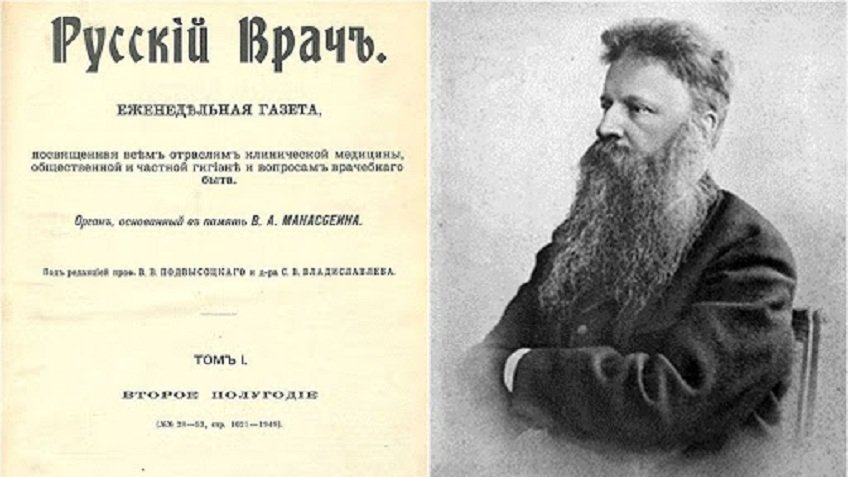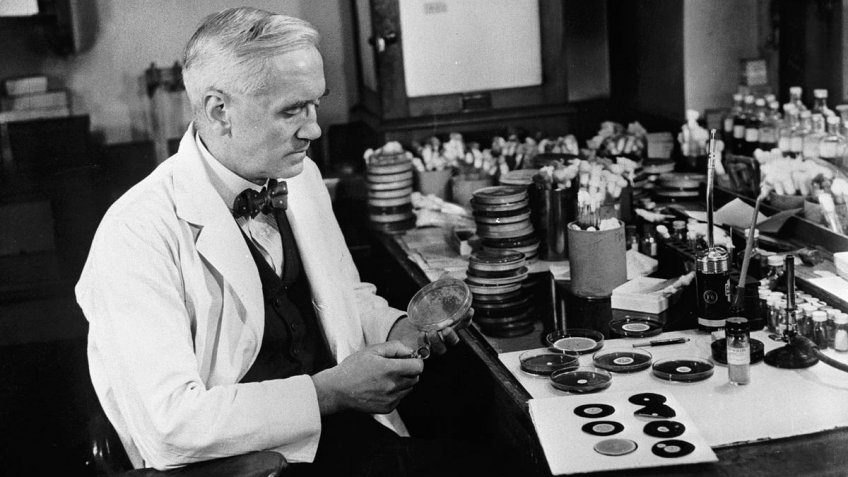
The discovery of an antibiotic that cured pneumonia, septicaemia and meningitis is now attributed to the British, with 3 scientists sharing a Nobel Prize in Physiology or Medicine for their work. So how come Russian medics, who had discovered the drug 70 years beforehand, were left out of the picture?
It is believed that since penicillin was first used, human life expectancy has increased by an average of 30-35 years. It is difficult to say for sure since mould, which is the basis of the world's first antibiotic, has been used to fight infectious diseases since ancient times. For example, in India, China and Egypt, herbalists applied mouldy bread to disinfect wounds, and Russian peasants ate the spoiled crusts when they had digestive problems. References to similar examples can be found in the writings of the Persian scholar Avicenna (11th century) or the Swiss alchemist Paracelsus (16th century). However, the real potential of this treatment was discovered much later.
In the 1860s, mould attracted the attention of two Russian physicians - Alexey Polotebnov and Vyacheslav Manassein. The scientists simultaneously engaged in research on Penicillium glaucum mould. Later, they even conducted a scientific discussion. Polotebnov was then working as an assistant to the famous Professor Sergei Botkin. Today a clinical hospital in Moscow and an infectious diseases hospital in St. Petersburg are named after him. The ambitious young man argued that all fungal growths originated from mould like all microbes on earth. Manassein studied therapeutic medicine in the Russian Empire and at universities in Estonia, Austria, and Germany. He went down in history as one of the organisers of zemstvo medicine and a fierce opponent of the unscientific approach to healing, quackery and unfounded conclusions. He disagreed with Polotebnov's high-profile statement.
"Why to argue for nothing?", the scientists decided and moved on to concrete experiments. Manassein set out to obtain the purest sample of mould for his experiments - he boiled test tubes and cotton plugs, dried them in air heated to 200 degrees Celsius, calcined the instruments, and repeatedly transplanted mould cultures. As a result, he proved that the micro-organisms did not originate from the mould. They came into the test tubes outside. Most importantly, he discovered during his research that mould fungi destroy other bacterial cells. That is, where they increase - other bacteria disappear. The medic described this and other properties of green mould in detail in his scientific work.
Polotebnov carried out his tests in an aquatic environment and noticed that the water in which the mould had formed remained clean and clear - there were no bacteria in it. He admitted defeat but did not stop his experiments.
Alexei Gerasimovich, who later became the founder of Russian dermatology, recommended using the mould to treat skin diseases, particularly wounds and syphilitic ulcers. According to one of the versions, he initially put forward this proposal to shame people with parasitophobia. There were a great many of them in growing cities. Like many doctors of the day, he did not believe that germs could cause disease. He is said to have been overwhelmed by the rapid improvement in patients treated with mould.
Anyway, having found out the therapeutic effect of mould, Polotebnov began to apply it in his practice, recommended it to other doctors, and in 1873 he wrote the work "Pathological significance of green mould". Presenting his discovery to the public, he hoped for a response from the scientific community. But this did not happen.
Today one hears that the Russian scientists lacked perseverance in proving and disseminating their findings. Besides, their truly breakthrough experiments and articles went unnoticed because their colleagues were not ready for them - they kept resorting to bloodletting, urine therapy and other medieval methods.
The topic was revisited 70 years later when English microbiologist Alexander Fleming made a chance discovery in his laboratory:
"When I woke up at dawn on 28 September 1928, I certainly did not plan to revolutionise medicine by discovering the world's first antibiotic or killer bacteria. But I suppose that's what I did."
The Briton was not known for his tidiness and took his time cleaning used test tubes and Petri dishes in which researchers cultured microbial colonies. They piled up on his desk for weeks. Once, in one of these cups with the remains of grown staphylococci, the scientist discovered a colony of mould fungi. It had managed to form there and inhibited the bacteria precisely what the Russian medics had found decades earlier! Fleming went further in his experiments and isolated from mould an active substance that destroyed bacterial cells. The fluid secreted by the fungus had excellent bactericidal properties. Even diluted 20-fold with water, dilution left the bacteria no chance. Fleming named it penicillin. It was the first antibiotic in human history.
Fleming was incredibly tenacious and, despite the lack of attention from scientists, he continued to tout his discovery in each of his speeches. Until he interested two English scientists - Howard Florey and Ernest Boris Cheyne, they had developed methods of purifying penicillin. It was one thing to apply a "broth of mould" to wounds but quite another to administer it intravenously. Their research enabled the mass production of penicillin during the Second World War. Until then, wounded soldiers were more likely to die from bacterial infections than from the severity of their wounds themselves. In 1945, Fleming, Flory and Cheyne were awarded the Nobel Prize in Physiology or Medicine. The Paris newspapers wrote: "Alexander Fleming did more than whole divisions to defeat fascism and liberate France". And the Russian discoverers of the miraculous properties of mould never received the rapturous headlines.




